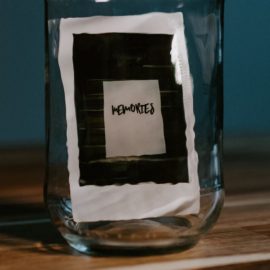

This article is an excerpt from the Shortform book guide to "Come As You Are" by Emily Nagoski. Shortform has the world's best summaries and analyses of books you should be reading.
Like this article? Sign up for a free trial here .
Are you looking for Come as You Are quotes by Emily Nagoski? What are some of the most noteworthy passages worth revisiting?
In Come As You Are, author Emily Nagoski uses scientific research and her years of experience as a sex educator to change the negative way that women talk, think, and feel about their sexuality due to years of misinformation and harmful cultural messaging surrounding sex.
Here is a selection of passages highlighting the key themes explored in the book.
Come as You Are: The Surprising New Science That Will Transform Your Sex Life
In her book Come as You Are, Emily Nagoski argues that our culture’s tendency to consider men’s sexual experience the standard perpetuates a lot of misinformation about what’s sexually normal and healthy for women. This tendency forces women to view themselves through a scope that wasn’t made for them, ultimately inflicting harm to their sexual health and well-being.
Arguing that a scientific perspective on sexuality can free women from unrealistic standards and help them to appreciate their individual experiences, Nagoski considers sexuality from every biological angle while dispelling cultural misconceptions along the way.
The following Come as You Are quotes highlight some of the key themes of her message.
“Medieval anatomists called women’s external genitals the “pudendum,” a word derived from the Latin pudere, meaning “to make ashamed.” Our genitalia were thus named “from the shamefacedness that is in women to have them seen.”
During the medieval period, people called the female genitalia pudendum (from Latin pudere, “to make ashamed”). The reasoning for this was that women’s genitalia (in contrast to men’s) appear hidden inside the body, as if women are trying to conceal something they’re ashamed of.
In reality, the female genitalia aren’t “hidden” at all. Nagoski tells us that instead, the various parts have different sizes and locations from their male counterparts due to biological reasons. Assigning such a negative name to women’s genitalia not only points to a lack of biological understanding, but it also perpetuates the idea that there’s something fundamentally wrong with their genitalia. If there wasn’t, why else would women try to hide them?
Nagoski explains that although modern culture doesn’t suggest that women are hiding something disgraceful in a literal sense, the idea that women’s genitalia is somehow shameful remains prominent in the way both men and women feel and talk about female sexuality. For example, both sexes shame women when their clothing inadvertently (and often unavoidably) accentuates the shape of their vulva—what is commonly known as a “camel toe.”
“The problem isn’t the desire itself, it’s the context. You need more sexually relevant stimuli activating the accelerator and fewer things hitting the brake.”
Because desire is the interaction of pleasure and context, creating an environment that makes us feel excited for sex and uninhibited by what our brain sees as threats is the best way to ensure great sex with our partner. Nagoski even says that there isn’t really a lack of desire—just an abundance of the wrong contextual factors, such as the circumstances, emotional states, and cultural messaging. All of these things activate the SIS (sexual inhibition system) and inhibit our desire for sex.
“Sex is an attachment behavior, reinforcing the social bond between adults. Sometimes it takes the form of passionate, joyful sex between people who are falling in love with each other. Sometimes it takes the form of desperate, grasping sex between people whose attachment is threatened.”
Depending on how our caregivers cared for us as children, we develop different styles of attachment. According to sex researcher Emily Nagoski, your attachment style not only dictates your behavior in romantic relationships but also affects your sexual experience. Here is how people with secure, anxious, and avoidant attachment tend to approach sex:
- Secure attachment: People who develop secure attachment are most likely to have healthy sexual wellbeing, having more frequent and enjoyable sex.
- Anxious attachment: Those who develop anxious attachment tend to use sex to become more attached to their partner (especially in the case of women). They also experience more pain and anxiety around sex.
- Avoidant attachment: Individuals who develop this type of attachment start having sex later in life and less often overall. They also feel less of a connection between sex and relationships and tend to engage in more one-night stands and casual relationships.
“What turns us on (or off) is learned from culture, in much the same way children learn vocabulary and accents from culture.”
Nagoski explains that although we may assume this knowledge is innate, in reality we learn almost all sexual stimuli through culture. In other words, society teaches us what to find arousing and off-putting.
(Shortform note: Culture has such a powerful impact on our perception of sexuality that people can view even the same body part through an entirely different scope in different parts of the world. For example, while in many western cultures a woman’s breast is likely to trigger arousal, in other communities, the breast is treated as a neutral body part in comparison to others, such as the buttocks.)
“We’re raising women to be sexually dysfunctional, with all the ‘no’ messages we’re giving them about diseases and shame and fear. And then as soon as they’re eighteen they’re supposed to be sexual rock stars, multiorgasmic and totally uninhibited. It doesn’t make any sense. None of the things we do in our society prepares women for that.”
Whether we’re aware of it or not, culture dictates our beliefs and ideals, including how we feel about sex. Nagoski tells us that women in particular grow up hearing a lot of negative messages about sex, which creates deep-seated feelings of shame and fear that can be detrimental to their sexual experience and well-being.

———End of Preview———
Like what you just read? Read the rest of the world's best book summary and analysis of Emily Nagoski's "Come As You Are" at Shortform .
Here's what you'll find in our full Come As You Are summary :
- Why women should change the way they talk, think, and feel about their sexuality
- A look at the misinformation and harmful cultural messaging surrounding sex
- A discussion around the individual experiences of arousal, desire, and orgasm






